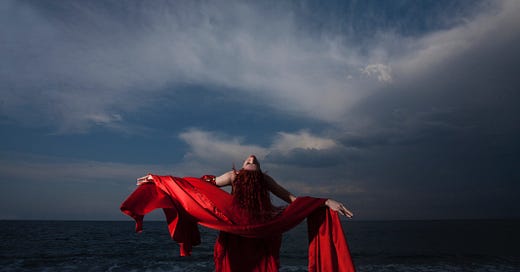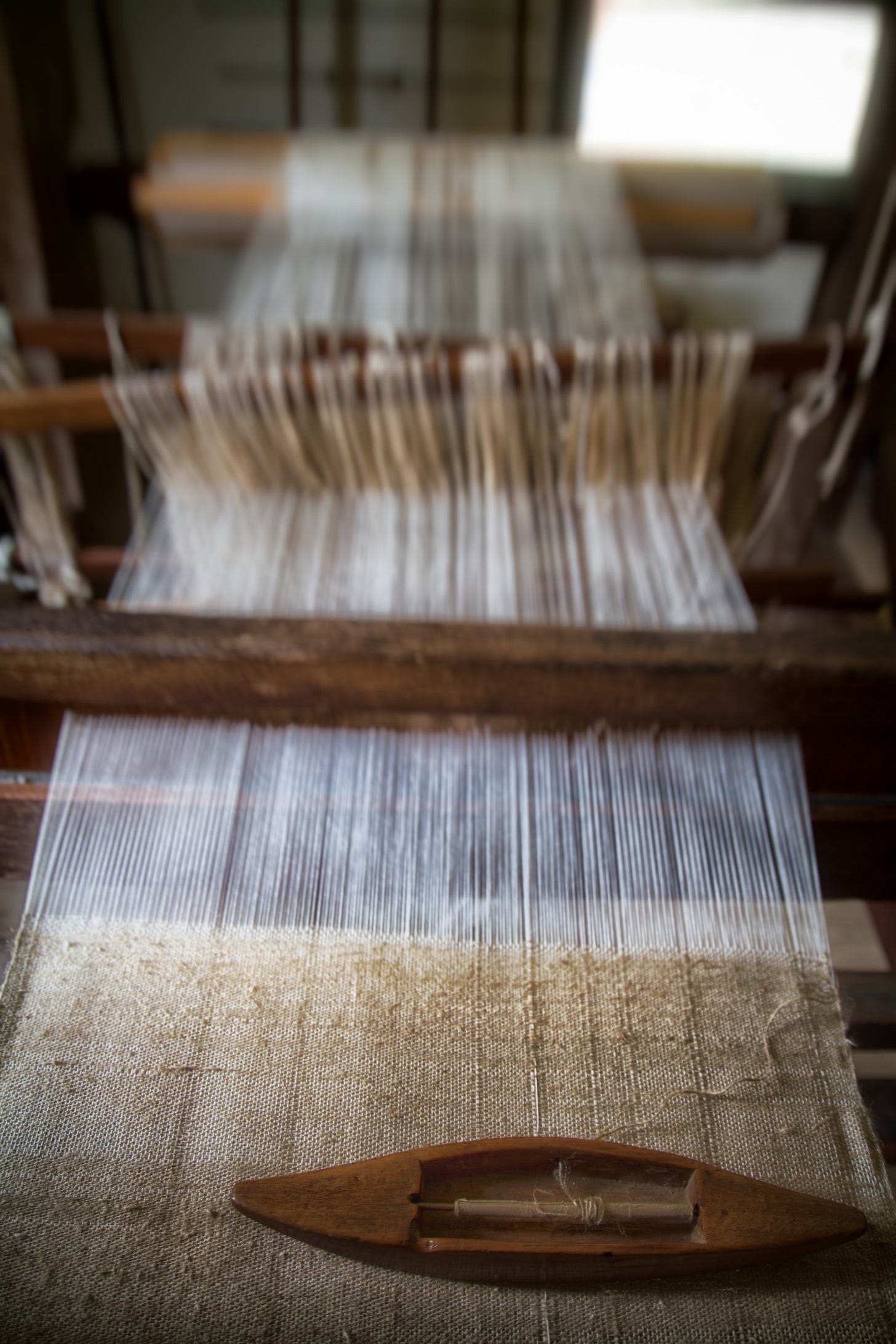Interweaving the warp and the weft: Part One
The power and transformation of reframing our stories
Greek mythology is shot through with examples of weaving, the art form practised by goddesses in stories that have been handed down through western civilisation for generations. The representations of weaving in these stories bring to the fore, I think, issues of voice, choice, creative expression and empowerment—especially for women.
Things ended badly for Arachne, who subversively wove tales of the gods’ erotic encounters into a tapestry and was punished by being turned into a spider. Likewise, Philomela, regarded as a minor goddess figure but nevertheless famed for her accomplished weaving skills, was transformed into a nightingale after first losing her tongue for speaking out against male violence.
The entrapment and disempowerment of these mythological female characters is unquestionable; it is also, of course, further amplified by the fact that the stories themselves are encoded in western culture predominantly by men. Women through the twentieth- and twenty-first centuries have attempted, in different artistic forms, to reframe those narratives to give the female deities a voice. This ranges from writers like Anne Carson, Margaret Atwood, Madeline Miller and Pat Barker, to Martha Graham’s dance pieces, to contemporary visual artists like Calida Rawles, Pamela Phatsimo Sunstrum and Harmonia Rosales are (all of whom engage with mythological material in their quest to convey more nuanced ways of depicting the interior lives of Black women). The importance of women wresting back their stories is the touchstone of Elizabeth Lesser’s Cassandra Speaks, a book that argues for a reworking of foundational western narratives (especially those of mythology) and which is ultimately ‘a call for all people to redefine what it means to be fully human.’
Stories, all stories, have a potentially different impact when we shift the perspective.
Take Penelope. The legend has it that, while waiting for Odysseus to return from questing on his lengthy hero’s journey, Penelope observed her wifely duties through weaving. While the weaving remained unfinished, she had an excuse to fend off the suitors who were keen to claim her in the absence (and presumed disappearance of) her husband. Penelope’s ploy to unpick by night the handiwork she had done by day bought her crucial time. It was also a way to subvert the masculinist power systems that dictated she should have a replacement partner.
What strikes me is how weaving, in this instance, stands as a metaphor for the enactment of female empowerment and autonomous creativity. As Penelope weaves and unpicks, she not only saves herself, she enacts her own story, over and over—taking the power of expression into her own hands. Weaving, in this context, contains at its heart the potential for continual transformation.
Like Penelope, we all have the scope to make something—an artefact, a creative output, a life—and then to unravel it and begin again. We can reframe our stories. We have the capacity, if we want, to start afresh each time.
We just need to know how.
I’ve used metaphors of weaving over the years—in my own writing and with the creatives I work with as a coach and mentor—to envision the form and structure of a piece. With writers, especially of a book length project, I often talk about the need to identify the warp and the weft of their work in progress.
The warp—made up of the longitudinal strands that run from top to bottom on a loom —creates the spine of the story, the trajectory and linear journey we want to create for the reader. The transverse threads—known as the weft—are inserted over and under those of the warp to fill in the spaces and build the material’s texture. In writing terms, these threads of the weft are the details that connect us to the story and bring it alive: key themes, as well as the specificity in the experience of the characters, descriptions of setting, the fictional world.
What’s important here, of course, is integration: we need both form/structure (warp) and content (weft) combined if we are to experience the beauty and potential of the whole.
Form and content. All creative forms require the integration of these two things.
And life—which we might consider to be the ultimate art form—also requires these things. What are our days if not form waiting to be filled with content, with decisions as to how to fill the blank canvas, the empty page or inhabit the performance space? This is perhaps why time is such a key challenge for many creatives (‘how should I spend it? how do I juggle my many priorities? what order do I do things in, and why?’).
While life is finite, for most of us our choices are not. Even if we don’t identify as ‘creative practitioners’, there is artistry in how we curate our lives. We have the power to choose the colour and texture of the threads we weave onto the warp. Then, if we want to change it, we can unpick it. This act of making, this living, is a process; a process that offers us contexts of possibility, the creation and revision of what we want to make: a thing, an artefact; a life.
At the heart of this integration—as we consider the individual threads we want to incorporate into the whole—is the notion of harmony.
For me, harmony means ‘an interweaving of separate yet related parts to create the effect of beauty, joy, peace or pleasure’ (this is a definition I’ve made up, ironically enough, by weaving together a couple of definitions I’ve found elsewhere). There can be something immensely satisfying in the action of integrating or unifying things. I find this integration to be the essence of creativity itself: the identification of two or more seemingly unrelated things, which are then spliced together in new or innovative ways. To create joy, peace, beauty or pleasure is the essence of creative expression, I believe, and is reliant on the embodied act of weaving together those separate elements.
So, how can we do that for our lives?
To answer this question is to tackle fundamental ontological questions – issues that relate to who we are: our Being in the world. Our lives are braided threads of different parts: relationships with those we love, family, friends; our paid work or life’s work; and perhaps those things we do outside of work hours. One of the curses of (western) contemporary life has been the insistence on the need to establish an effective work/life balance. What if, instead, we focused on our innate potential to choose, to highlight in turn each strand then to interweave and integrate them all into the broader fabric of the whole?
By shifting the perspective in this way, the question is not ‘how can I achieve an effective work/life balance?’ but becomes instead: ‘how can I harmonise the different parts of my life to achieve more beauty, joy, peace and pleasure’?






I love this question about harmonising the elements of my life ❤️ - beautiful!